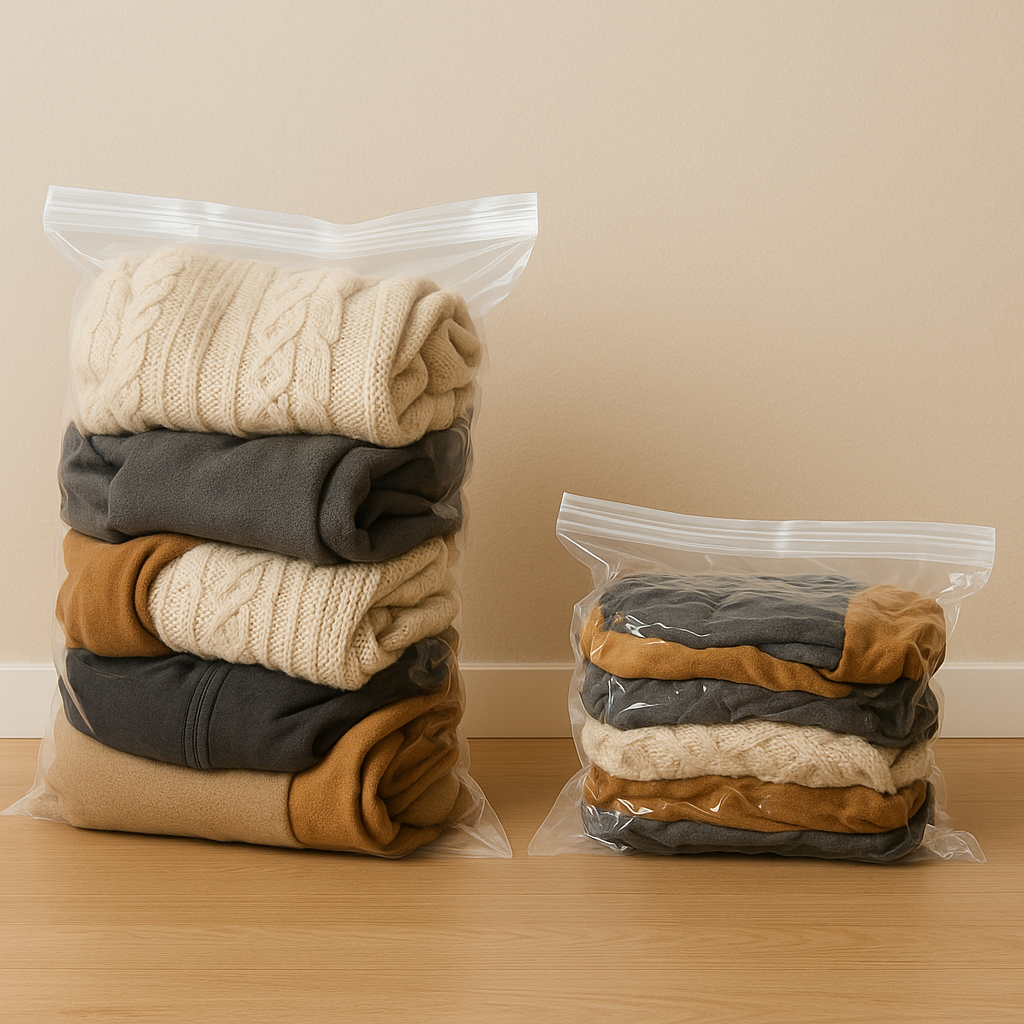Let’s be real — packing for a trip can feel like solving a puzzle where the pieces don’t quite fit. Whether you’re a seasoned globe-trotter or prepping for your first big adventure, you’ve probably wondered: when it comes to packing cubes vs compression bags, which one’s the real MVP?
Stick around, because we’re diving into the good, the bad, and the sometimes bulky truth about both. By the time you zip up that suitcase, you’ll have a clear winner (or maybe a winning combo!).
Packing Cubes vs Compression Bags: The Basics
Before we choose sides, let’s get to know the contenders. Packing cubes are like mini dressers for your suitcase — neat, tidy, and oh-so-satisfying when you open your bag. Compression bags, on the other hand, are the tough guys. They squish your clothes down to pancakes, freeing up major space (and leaving you feeling like a packing wizard).
Both have their fans, and honestly, both have earned their spot in travelers’ hearts (and luggage). But they shine in different situations, and that’s where the real fun begins.
Packing Cubes: The Organized Traveler’s Best Friend
Imagine opening your suitcase and knowing exactly where your pajamas are, where your socks live, and where that dress you’re dying to wear is hiding. Packing cubes make that dream a reality. They’re not just about organization — they’re about bringing a little bit of home (and sanity) with you on the road.
- Organization: Sort outfits by day, type, or even vibe (beach day, city stroll, hiking adventure).
- Accessibility: Need something quick? Just grab the cube instead of digging through a chaotic mess.
- Wrinkle Reduction: Less movement = fewer wrinkles. Your fancy dinner shirt will thank you.
- Flexibility: Different sizes, colors, and shapes mean you can create your perfect little luggage Tetris.
I personally swear by using a bright cube for essentials — easy to grab at a moment’s notice at the airport or in that tiny Airbnb closet!

Compression Bags: The Space-Saver’s Secret Weapon
If packing cubes are tidy librarians, compression bags are beast mode. These things squeeze every ounce of air out of your clothes, making giant piles of sweaters shrink down like magic. If you’re the kind of person who thinks “maybe I’ll need three coats in Hawaii,” you’re going to love compression bags.
- Space Efficiency: Watch your bulkiest clothes shrink before your eyes — it’s weirdly satisfying.
- Protection: Waterproof and airtight, because nobody needs surprise rain ruining your cozy sweaters.
- Cleanliness: Keep the muddy hiking boots separated from your evening wear. Win-win.
- Cold Weather Savior: Lugging around heavy coats? Compression bags to the rescue!
The Not-So-Glamorous Side
Not everything is sunshine and neatly packed suitcases. Both packing cubes and compression bags have their flaws, depending on what kind of traveler you are.
- Packing Cubes: Great organizers but they won’t save you if you’re fighting a carry-on limit. Plus, they tempt you into packing more “just because it fits.”
- Compression Bags: Hello, wrinkles! Your clothes might emerge looking like they lost a wrestling match. Plus, digging things out can be a pain mid-trip.
So, When Should You Use Them?
Quick cheat sheet:
- Packing Cubes: Perfect for weekend trips, family vacations, business travel — basically anytime you want easy access and a suitcase that doesn’t explode on opening.
- Compression Bags: Ideal for long-term travel, backpacking adventures, winter destinations, and budget airlines where space is at a premium.
Why Not Both?
Real talk: the pros pack smart — and that usually means mixing and matching. I stuff my bulky sweaters into compression bags and use packing cubes for everyday clothes and accessories. It’s like having your packing cake and eating it too!

Choosing between packing cubes vs compression bags comes down to your destination, travel style, and how much space (and patience) you have. Both have a place in your packing game — and knowing when to use each one can seriously level up your travel experience.
So what’s your move? Are you Team Cube, Team Compression, or proudly waving both flags? Share your travel tales in the comments — and make sure to follow WentWorld for more genius travel tips!
Catch up on the top stories and travel deals by subscribing to our newsletter!












Leave a Reply